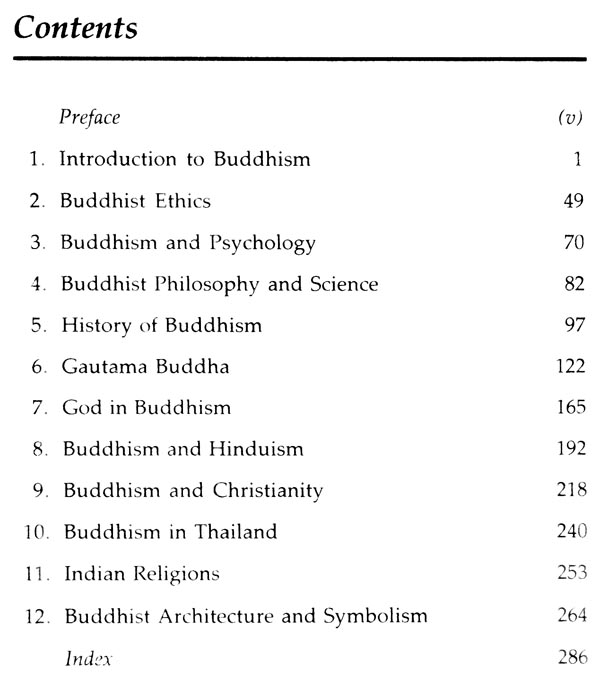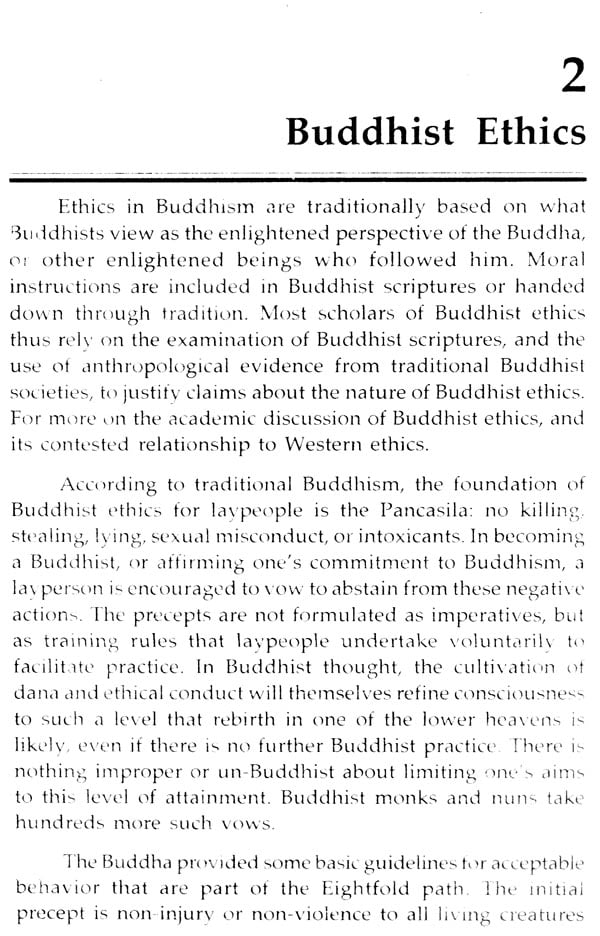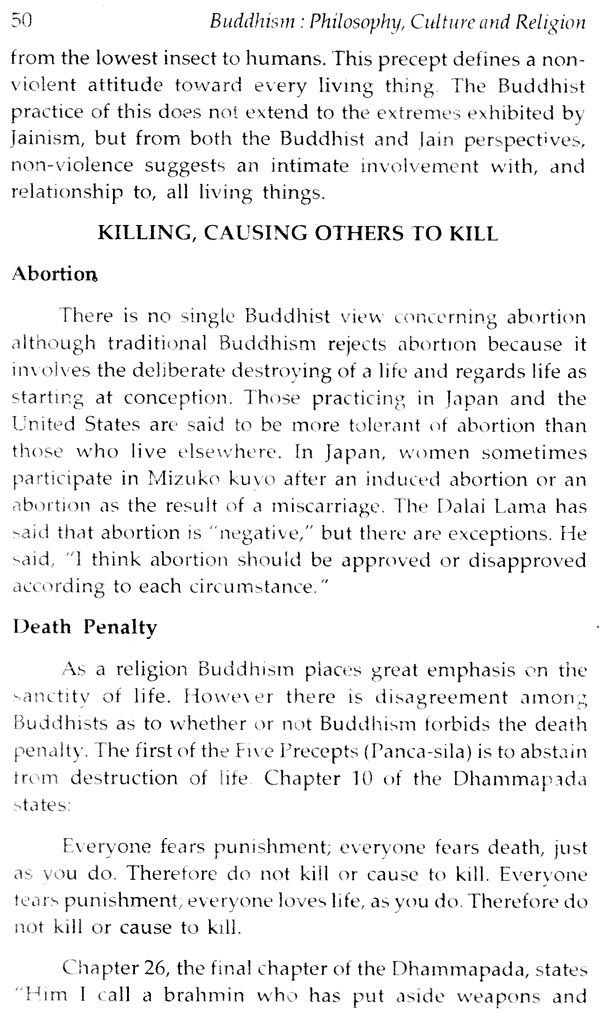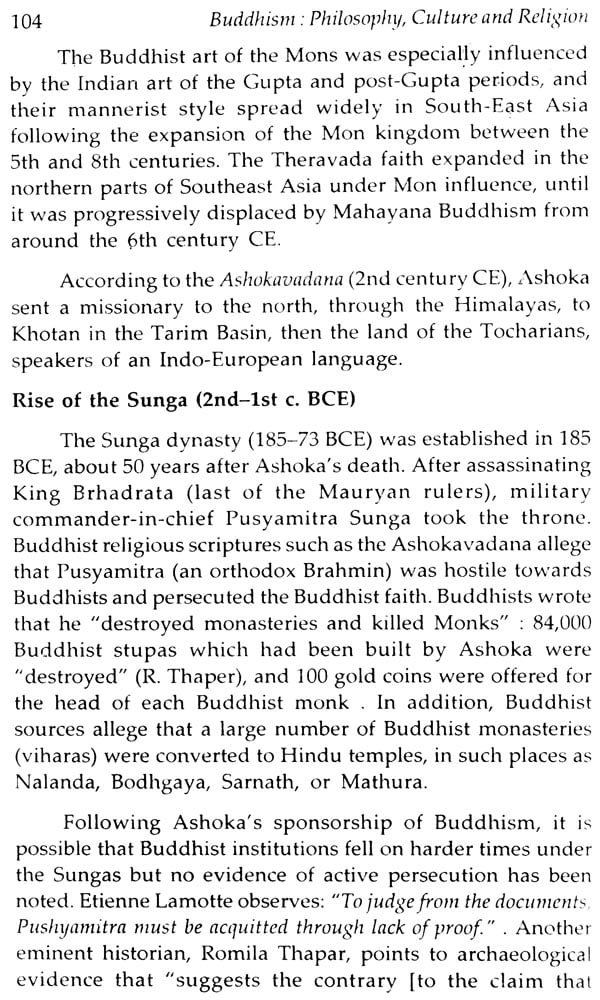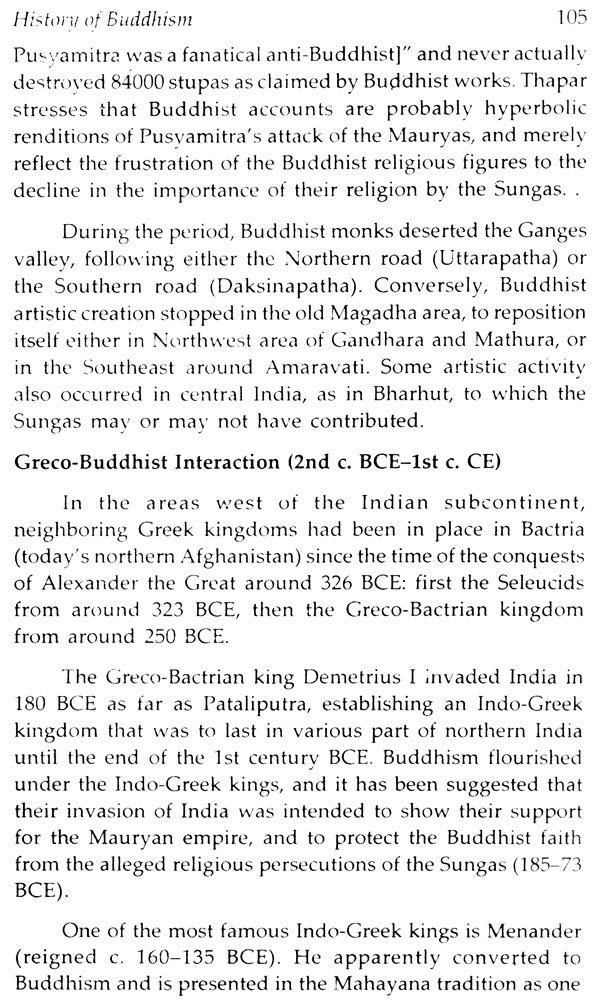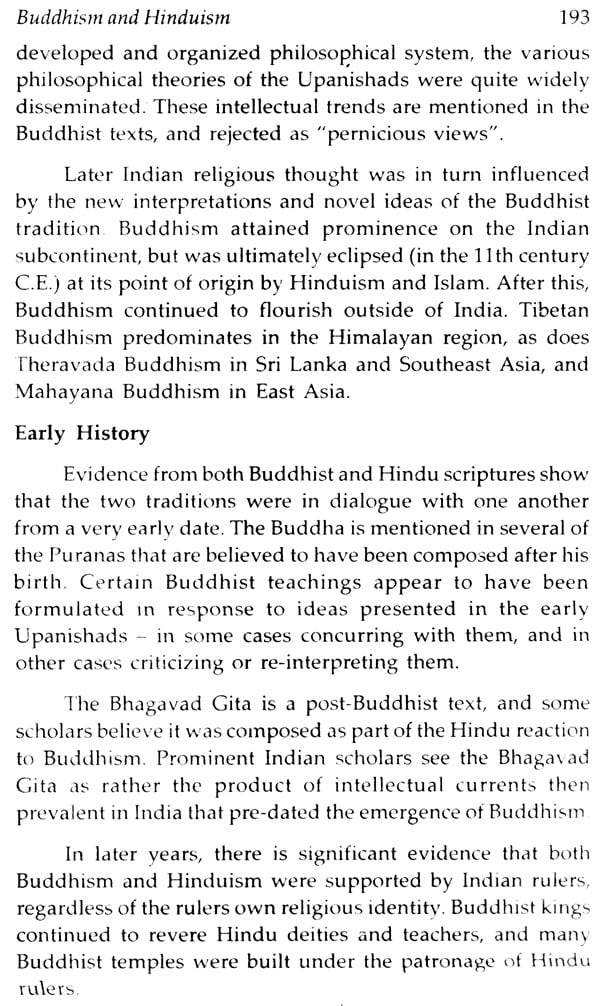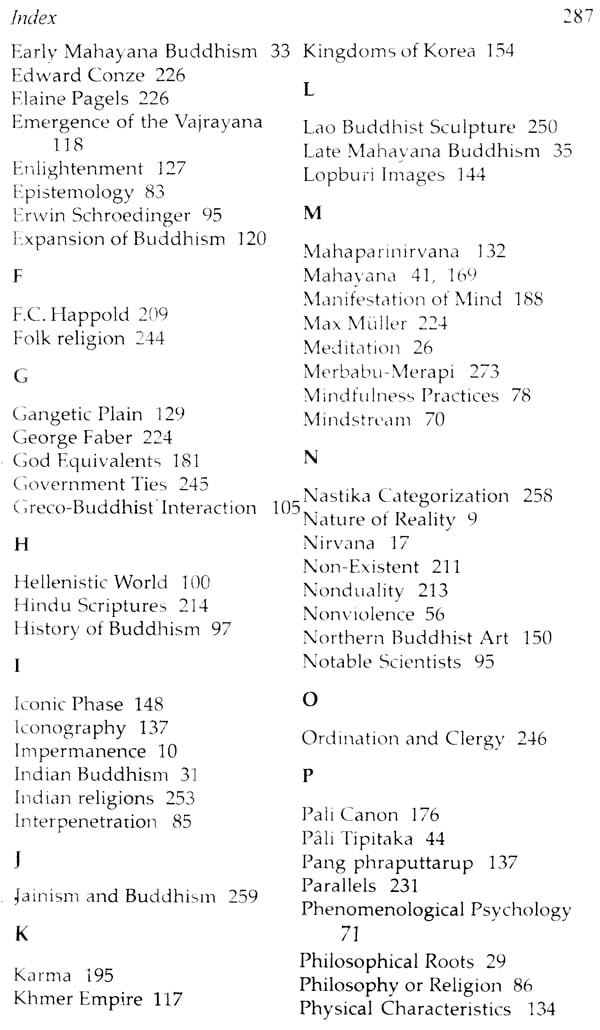
Buddhism - Philosophy, Culture and Religion
Book Specification
| Item Code: | NAY716 |
| Author: | Ratan Singh |
| Publisher: | Global Publications |
| Language: | English |
| Edition: | 2011 |
| ISBN: | 9789380833224 |
| Pages: | 292 |
| Cover: | HARDCOVER |
| Other Details | 9.00 X 6.00 inch |
| Weight | 460 gm |
Book Description
This Buddha era will end when all the knowledge, evidence and teachings of Gautama Buddha have vanished. This belief therefore maintains that many Buddha eras have started and ended throughout the course of human existence. The Gautama Buddha, then, is the Buddha of this era, who taught directly or indirectly to all other Buddha’s in it.
In addition, Mahayana Buddhists believe there are innumerable other Buddha’s in other universes. A Theravada commentary says that Buddha’s arise one at a time in this world element, and not at all in others.
The idea of the decline and gradual disappearance of the teaching has been influential in East Asian Buddhism. Pure Land Buddhism holds that it has declined to the point where few, if any, are capable of following the path, so most or all must rely on the power of the Buddha Amitabha. Zen and Nichiren traditionally hold that most are incapable of following the "complicated" paths of some other schools and present what they view as a simple practice instead.
The major topics dealt in this book are: Introduction to Buddhism; Buddhist Ethics; Buddhism and Psychology; Buddhist Philosophy and Science; History of Buddhism; Gautama Buddha; God in Buddhism; Buddhism and Hinduism; Buddhism an, Christianity; Buddhism in Thailand; Indian Religions; Buddhism Architecture and Symbolism; etc.
No doubt, these will serve the purpose of trainees an trainers, professional and policy planners in the field. Since the sources of information are all secondary, we express gratitude to the scholars whose works is cited substantially made use of. We are thankful to all those whose rendered ready help and cooperation while working on this project.
We express our gratitude to various scholars, teacher! and friends for their assistance and guidance. Finally, WE thank our publishers for bringing out this book in very limited time.
Born in what is today Nepal, the Buddha lived and taught in the northeastern region of the Indian subcontinent and most likely died around 400 Be in what is now modern India. Adherents recognize the Buddha as an awakened teacher who shared his insights to help sentient beings escape the cycle of suffering and rebirth. The Buddha's teachings provide instructions on how to understand the true nature of phenomena, end suffering, and achieve nirvana.
Buddhists use various methods to liberate themselves and others from the suffering of worldly existence. These include ethical conduct and altruism, devotional practices and ceremonies, the invocation of bodhisattvas, renunciation, meditation, the cultivation of mindfulness and wisdom, study, and physical exercises.
Two major branches of Buddhism are broadly recognized: Theravada (The School of the Elders") and Mahayana (The Great Vehicle"). Theravada, the oldest surviving, has a widespread following in Sri Lanka and Southeast Asia whilst Mahayana, which is found throughout East Asia, includes the traditions of Pure Land, Zen, Nichiren Buddhism, Shingon, Tibetan Buddhism and Tendai. In some methods of classification, Vajrayana is considered a third branch. Buddhist schools disagree on the historical teachings of the Buddha and on the importance and canonicity of various scriptures.
Increasingly, other forms of Modem Buddhism are encroaching upon the traditionally recognized mainstream branches. While Buddhism remains most popular within Asia, both branches are now found throughout the world. Various sources put the number of Buddhists in the world between 230 million and 500 million.
Life of the Buddha
The following information about Buddha's life comes from the Tipitaka (other scriptures, such as the Lalitavistara Sutra, give differing accounts).
Siddhartha Gautama, the founder of Buddhism, was born in the city of Lumbini around the year 563 BCE and was raised in Kapilavastu. Moments after birth, according to the scriptures, he performed the first of several miracles, taking a few steps and proclaiming, "Supreme am I in the world. Greatest am I in the world. Noblest am I in the world. This is my last birth. Never shall I be reborn."
Shortly thereafter, a wise man visited his father, King Suddhodana. The wise man said that Siddhartha would either become a great king (chakravartin) or a holy man (Sadhu) based on whether he saw life outside of the palace walls.
Determined to make Siddhartha a king, Suddhodana shielded his son from the unpleasant realities of daily life. Years after this, Gautama married Yasodhara, with whom he had a son, Rahula, who later became a Buddhist monk.
Book's Contents and Sample Pages
